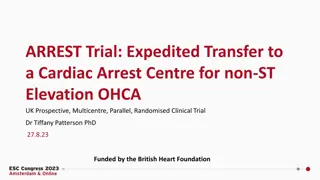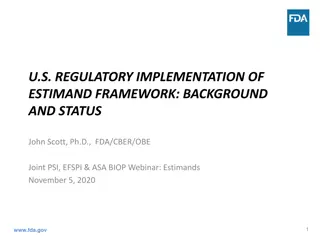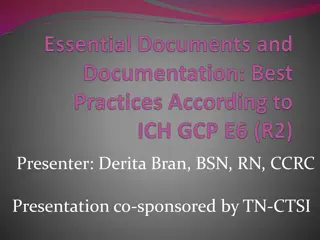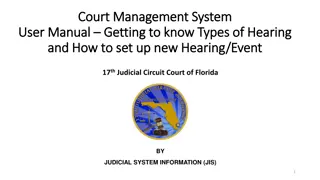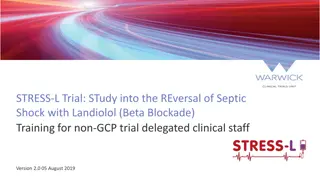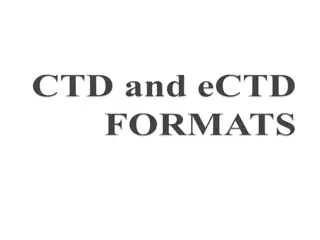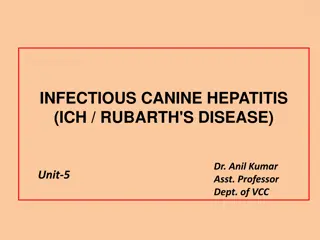Understanding Estimands at ICH for Improved Trial Objectives
Lack of clarity in trial objectives can lead to confusion among developers, decision-makers, patients, and prescribers. Estimands at ICH, presented by Rob Hemmings, address the need to focus on WHAT to estimate rather than just HOW. Patients differ in response to treatment, and multiple treatment effects must be considered. The current practice under ICH introduces the ITT principle, but challenges such as data collection after treatment discontinuation persist. ICH E9 (R1) introduces estimands that provide a structured framework for accurate estimation, aligning statistical approaches with the treatment effect of interest.
Download Presentation

Please find below an Image/Link to download the presentation.
The content on the website is provided AS IS for your information and personal use only. It may not be sold, licensed, or shared on other websites without obtaining consent from the author. Download presentation by click this link. If you encounter any issues during the download, it is possible that the publisher has removed the file from their server.
E N D
Presentation Transcript
Estimands at ICH Presented by Rob Hemmings
Problem statement Lack of clarity in trial objectives: Potential to confuse developers and decision makers. Misleading information to patients and prescribers So many conversations about HOW to estimate treatments effects, and so few about WHAT to estimate. The HOW has determined the WHAT. WHAT do we want to estimate? 2
Context Patients differ in response to treatment. Some patients will tolerate a medicine and adhere to its administration schedule, others will not; Some patients will require additional medication, others will not. Some patients die. More than one treatment effect can be described and estimated. Are these intercurrent events problems for estimation of a true effect or are they to be embraced? 3
Current practice under ICH E9 E9 introduces the ITT principle as the best way to assess a treatment-policy . Treatment discontinuation has been conflated with Trial discontinuation . Data after treatment discontinuation or perhaps use of rescue medication is not collected / not used. Multiple problems have been labelled as missing data . Today s practice doesn t adhere to the ITT principle. It hasn t been clear WHAT treatment effect is then being estimated, and arguably estimators (HOW) do not fully respect randomisation. Can we answer questions other than treatment-policy whist maintaining the benefits of randomisation? 4
ICH E9 (R1) Estimands; we have these NOW, in every trial, we just don t talk about them. ICH E9 addendum is currently being developed to provide a structured framework for talking about WHAT to estimate = the estimand. Statistical approaches then need be aligned with the treatment effect of interest. How to write a document that fits all therapeutic and experimental conditions? 5
Framework I Choice of estimand may impact study design and conduct and needs to be discussed first. Trial Objective Target of estimation = WHAT Estimand Sensitivity Estimator 1 Sensitivity Estimator k Main Estimator Sensitivity Estimate 1 Sensitivity Estimate k Main Estimate Supplementary analysis Method of estimation = HOW Sensitivity analysis 7
Strategies At least 5 strategies for addressing intercurrent events e.g. the intervention effect regardless of switching to rescue medication . Determine which intercurrent events need to be considered explicitly in the construction of the estimand in order to give a clear understanding of the treatment effect to be estimated. Multiple intercurrent events per trial means multiple strategies per estimand E.g. Difference between mean change from baseline to week 24 in HbA1c in the target population, regardless of adherence, if rescue medication is not available 9
Construction of an estimand Should be: consequent to the trial objectives and should precede choices relating to data collection and analytic approaches. clinically interpretable, in terms of the population and endpoint, but also in terms of the intervention effect of interest and, finally, the summary measure. duly justified considering the therapeutic setting and the treatment goals of the intervention, from which the key scientific questions of interest can be derived. a multi-disciplinary undertaking and should be the subject of discussion between sponsors and regulators. 10
Impact: regulatory experience Current experience from Scientific Advice Working Party Company questions Plenary discussions Future expectations for Scientific Advice requests Identify intercurrent events, discuss strategies and resulting estimands Move away from discussing endpoints? Discuss design and statistical analysis in relation to an agreed estimand 11
Impact: regulatory experience Current experience from CHMP List of Questions; ask about the handling of missing data or treatment effect of interest? Plenary discussions Potential consequences for future MAAs One estimand or many? Product Information and HTA engagement Note on external comparisons; context ; meta-analyses etc. Current expectations for future therapy-area guidelines 12
Thanks for your attention Image result for picture of montreal canada 13



